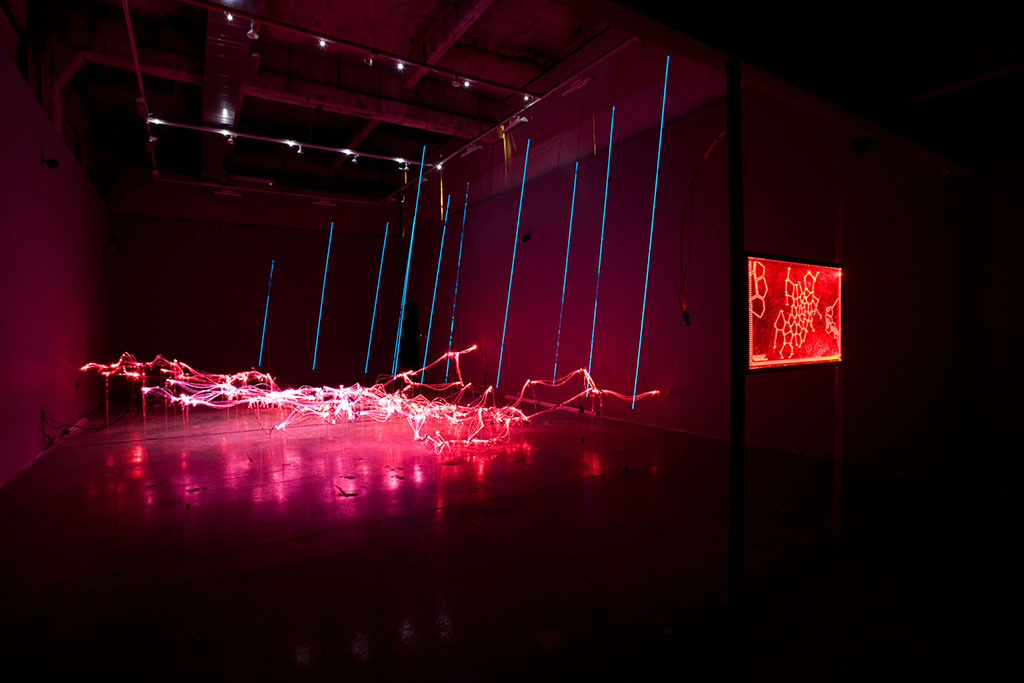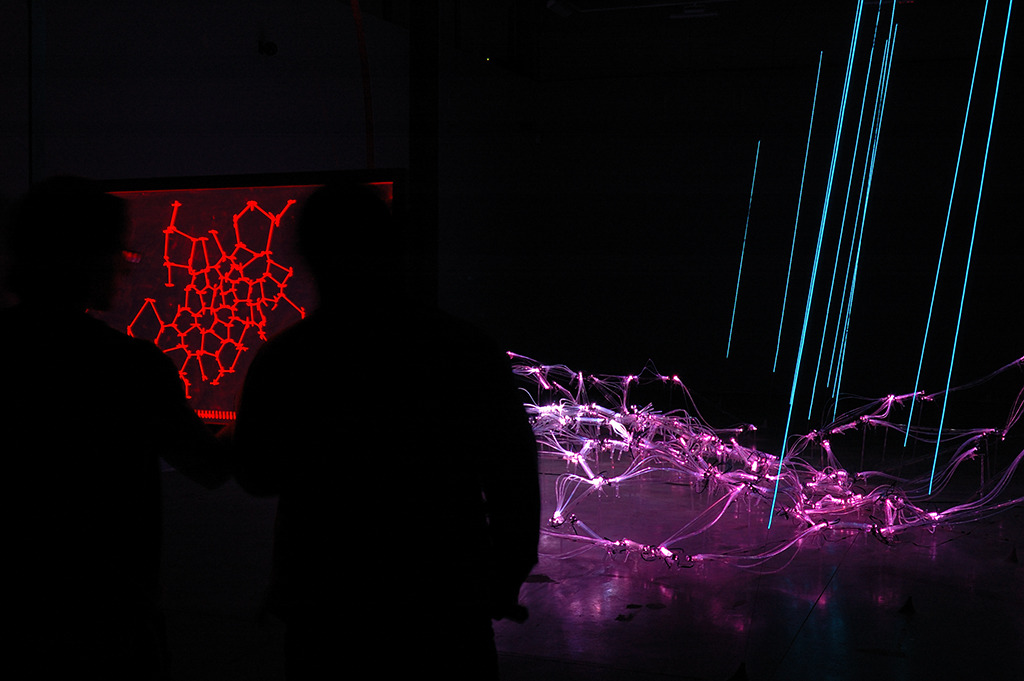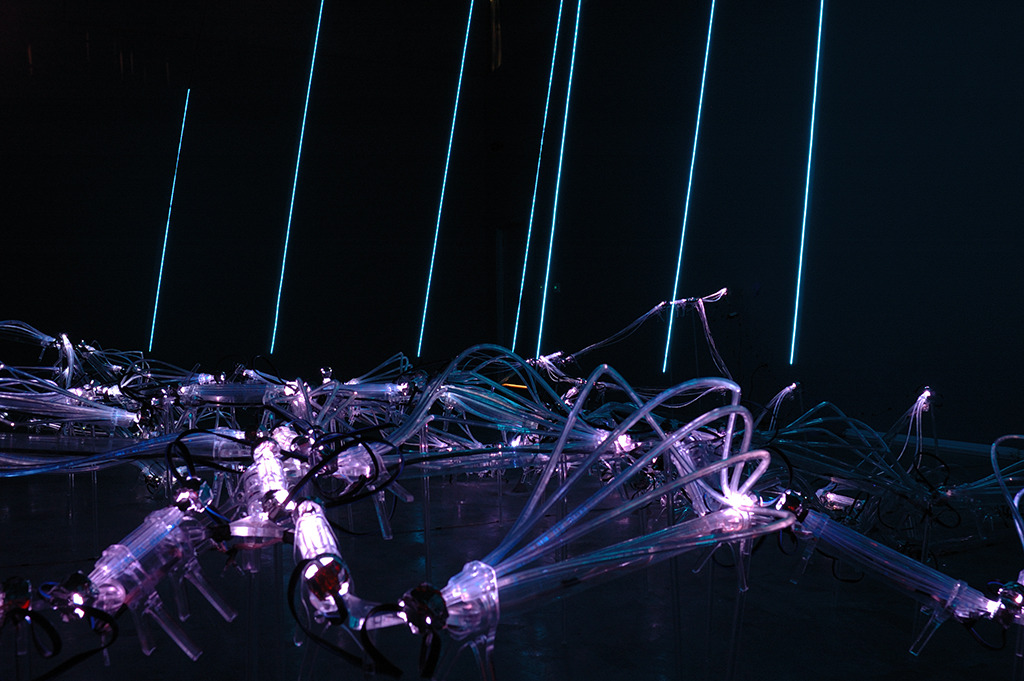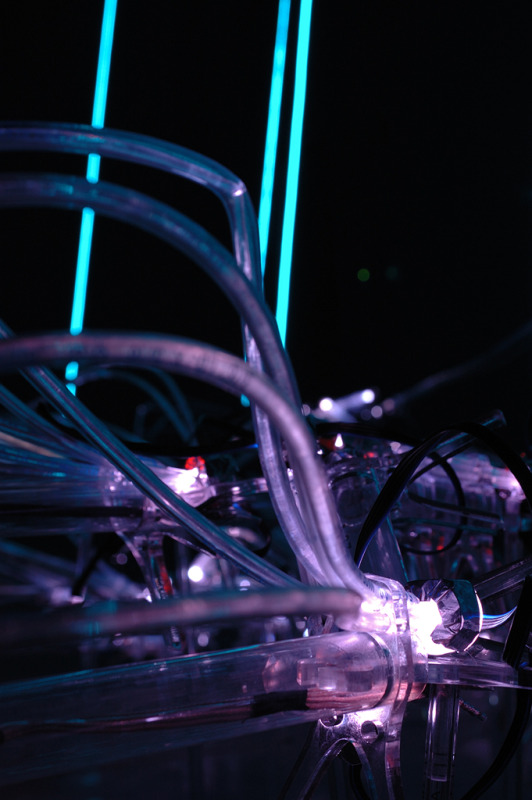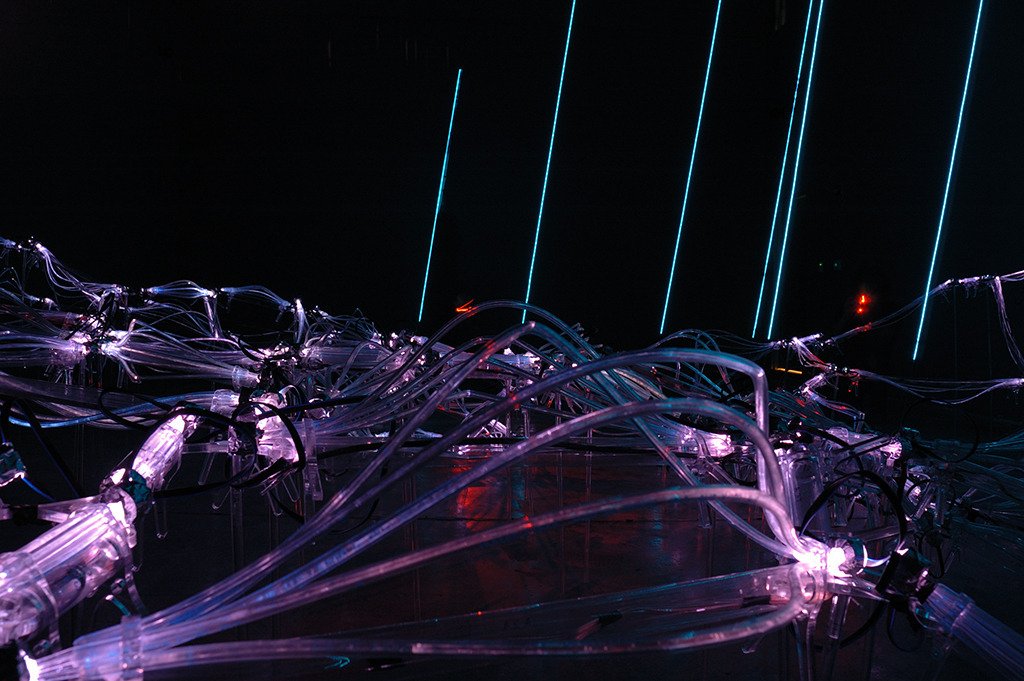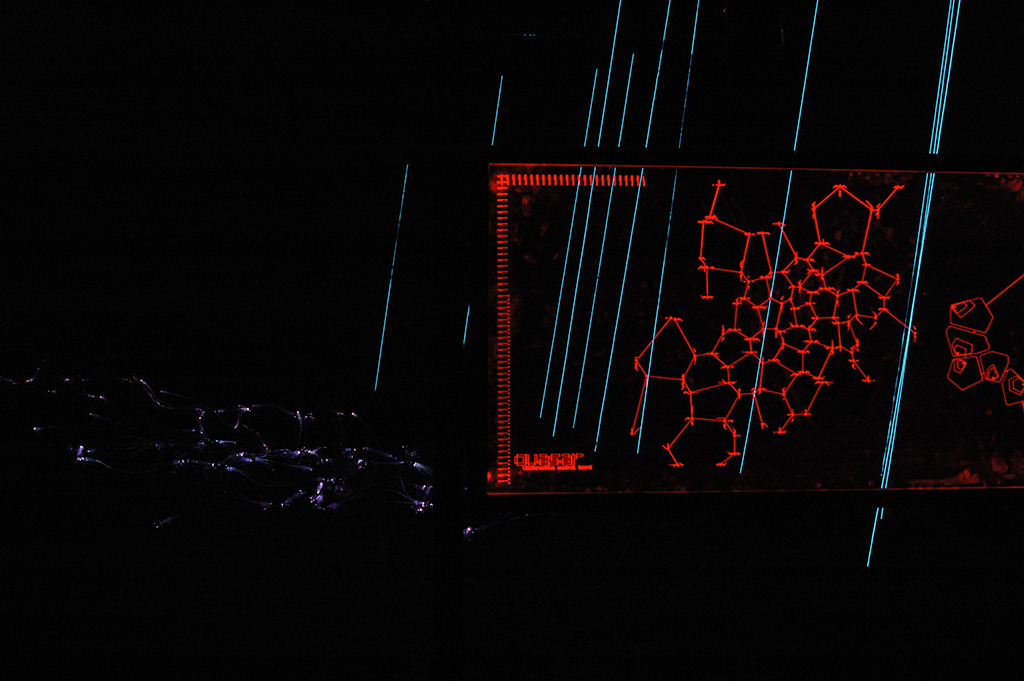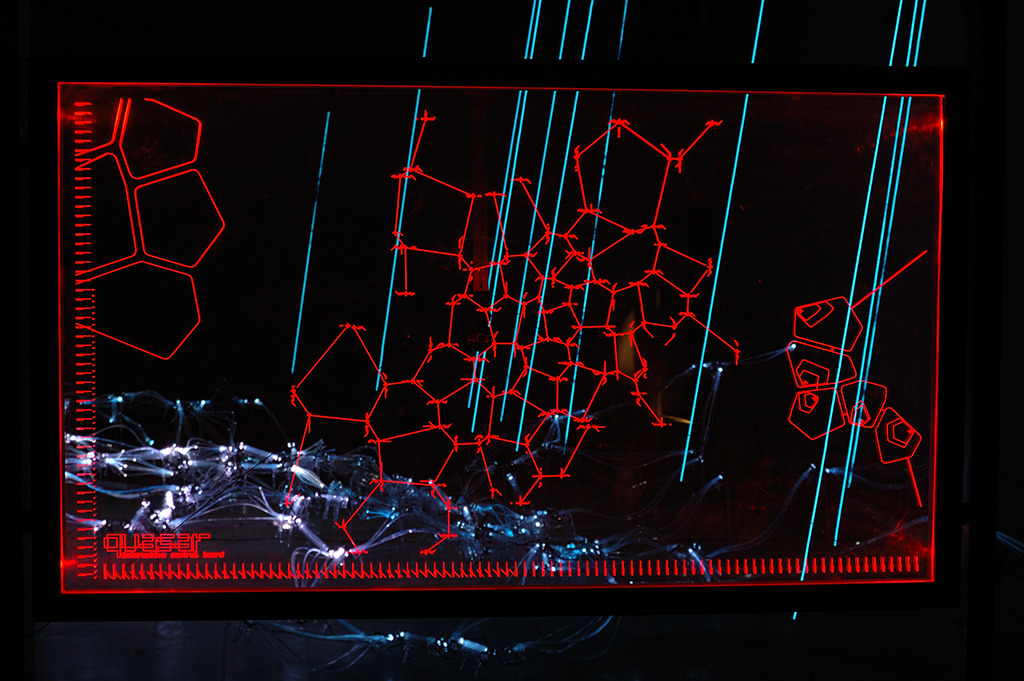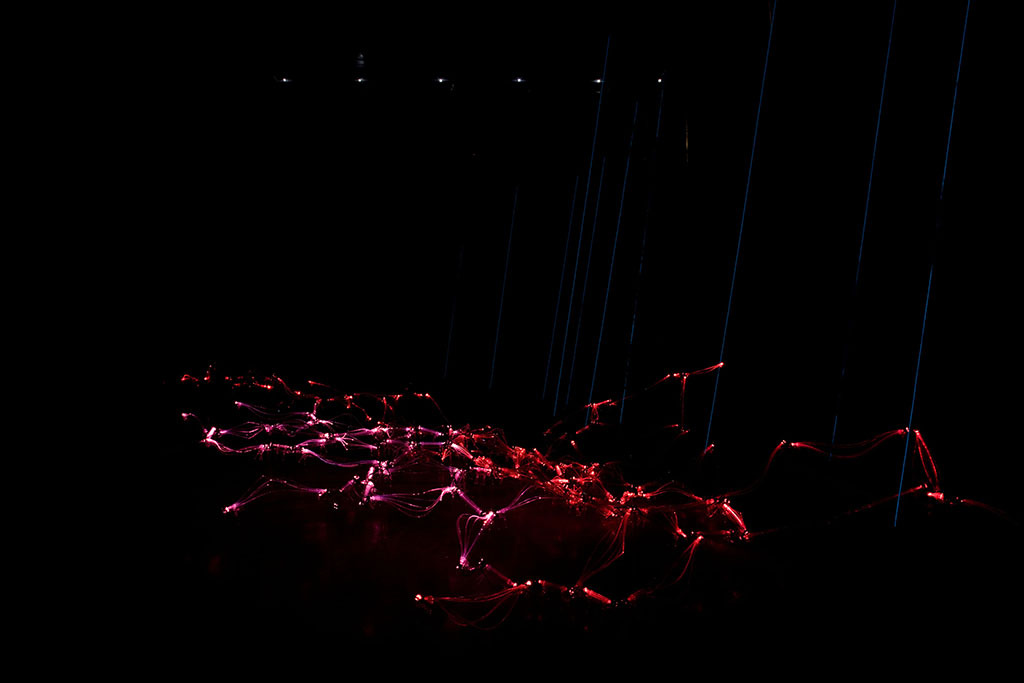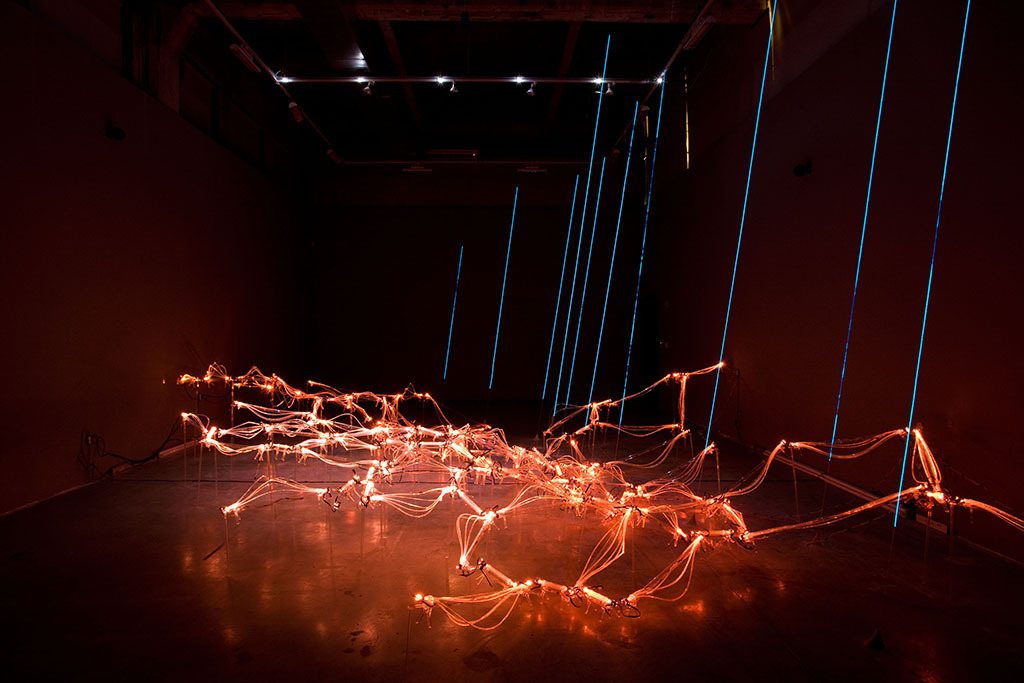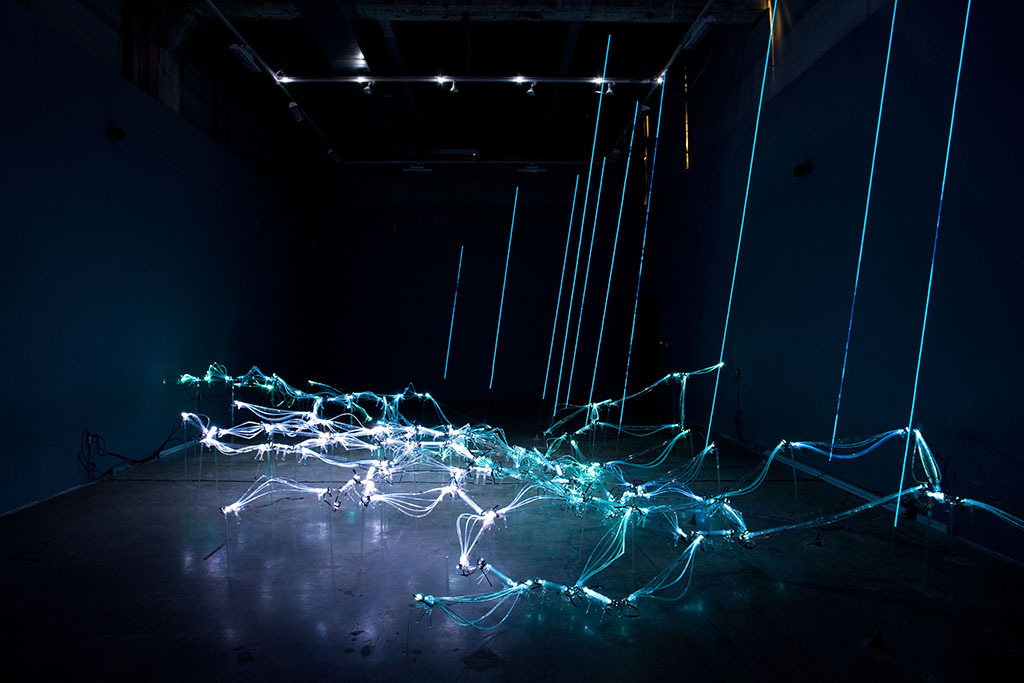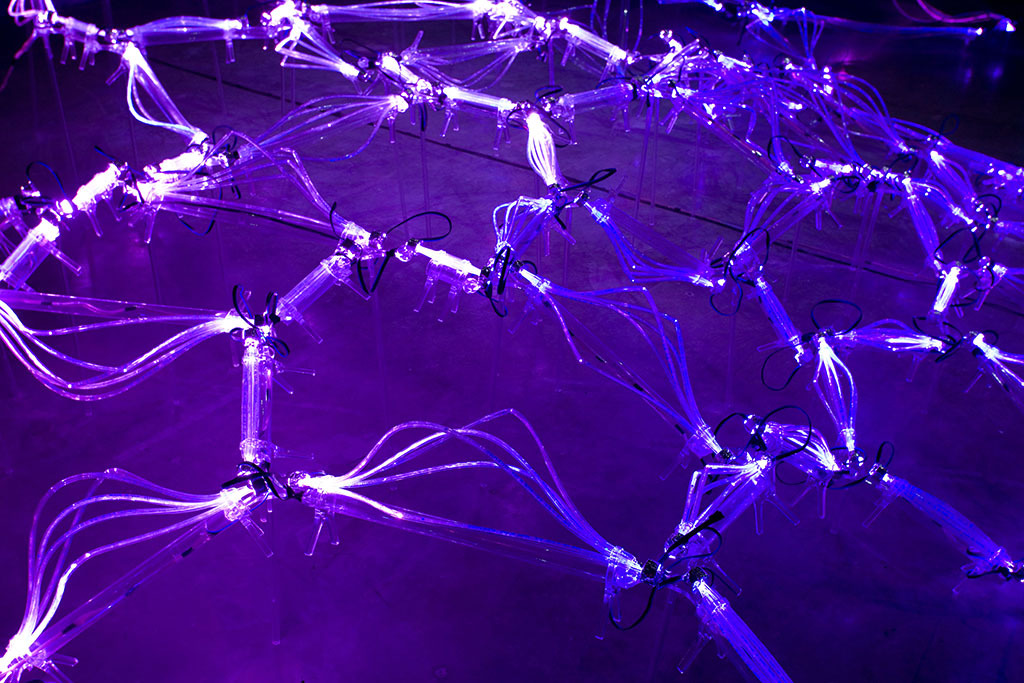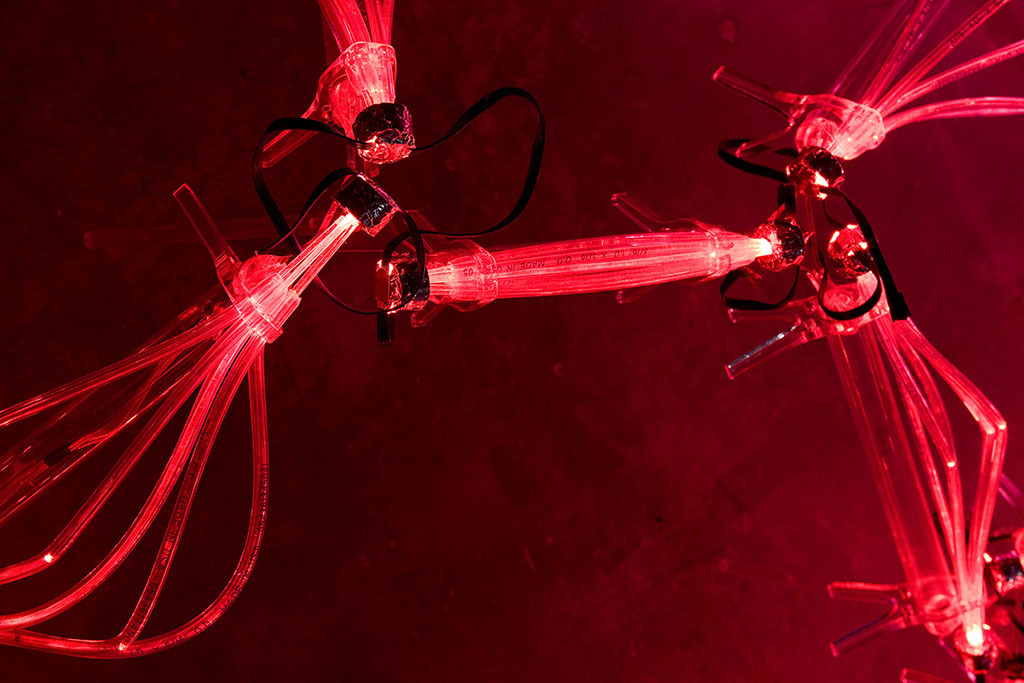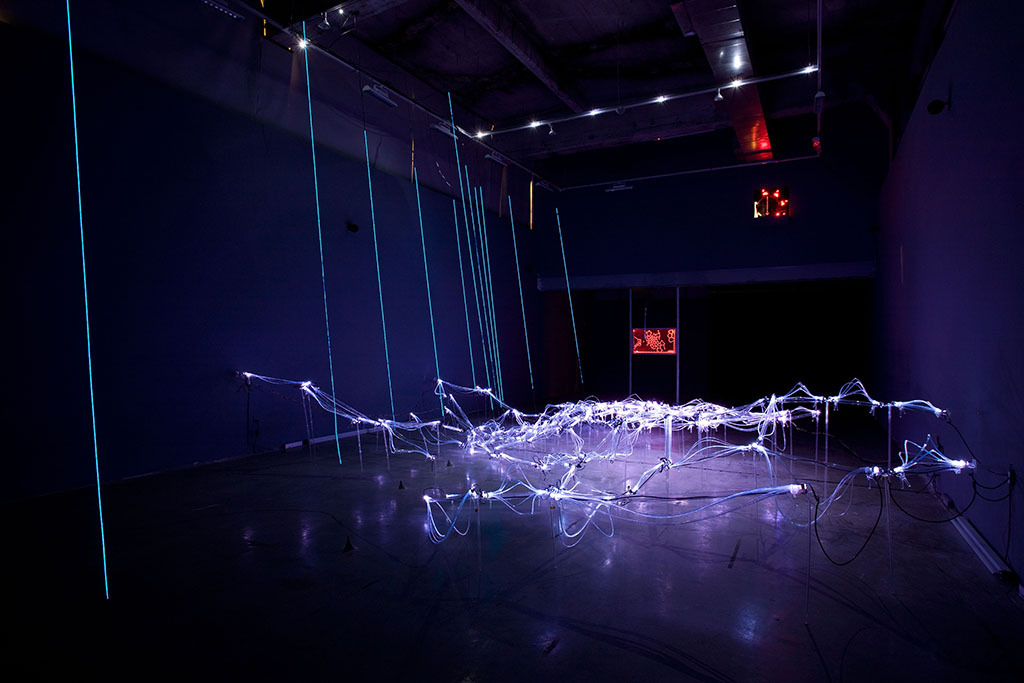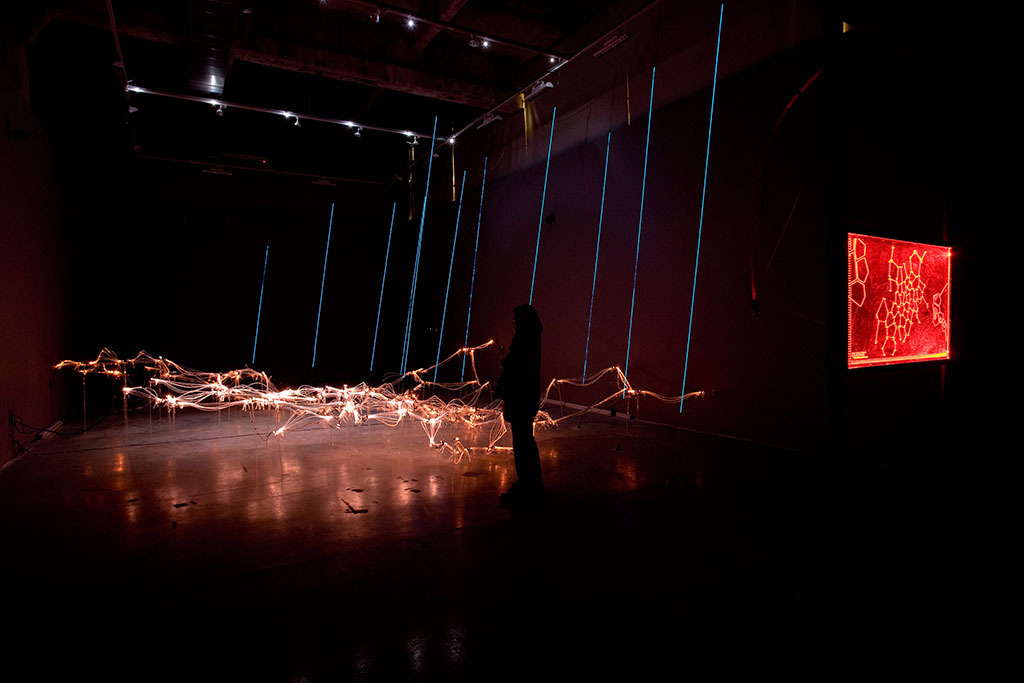Resonant Refraction
A Math-Art Collaboration between William Kronholm Ph.D, Julie Pate, and Aaron Bocanegra

Texture Overload
Video and Painting. A collaboration with Julie Pate

Muestra Fotografica: Rock Solidario | Photo Show: Solidarity Rock
A group show Shown across Cuba and Canada

EEG Explorations
A self-built open source EEG machine developed as a platform for exploring brainwaves in an art context.

Quasar
An immersive an interactive light, sound and sculptural site-specific installation at SCI-Arc in Los Angeles.

Escritura de Ciudad
A collaboration with Cuban writer Liudmila Quincoses. Poetry an Photography.

Entre Dos Ríos
Watercolor Paintings Done in Collaboration with Cuban Artist Hermes Entenza

Up North
A feature length documentary (1hr 57 min) exploring the experience of change in the north

Kayaking the Porcíuncula
3 Channel Video 38 Minutes

Sources
A series of 30x30 an 12x12 inch photographs exploring an expanded LA watershed

Porcíuncula
Video, 21 minutes, Polaroids, Black and White Photographs, Sculptural Water Elements












